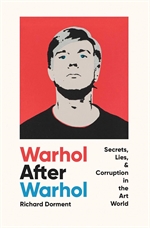Art Authentication Can be a Tricky Business!
Popular Tags

Wednesday, January 17, 2024 in News, Ask an Instructor, Education, Business Tips, For Consumers, For Appraisers

Art authentication can be tricky business. The International Society of Appraisers Core Course in Appraisal Studies teaches, “Authentication is a matter of informed and reasoned opinion, explaining, “Authentication is rarely definitive or absolute…. It is subject to revision as additional information becomes available…. It is subject to disagreement among experts.”
This disagreement among experts was recently explored in the new book Warhol After Warhol: Secrets, Lies & Corruption in the Art World by Richard Dorment, former chief art critic for the Daily Telegraph newspaper. The author explores his interactions with Joe Simon, an American film producer and art collector, who cold-called the journalist after reading his work. Simon wanted to know why the Andy Warhol Art Authentication Board had declared two Warhols in his collection as fakes.
One of the works was a collage including Federal Reserve Notes that was declared counterfeit since the “dollar bills” were issued after Warhol’s death in 1987. Because of that, the work could not have been from Warhol. Materials used in the construction of an artwork that did not exist when the artist was working have long been tells of a false work of art.
More contentious of the two works Simon owned was Red Self Portrait, a 1965 painting executed by a contract printer instead of the artist’s studio. Was the work evidence of Warhol’s “hands off” approach of art where the artist creates ideas and leaves execution to others under the artist’s authority, or was it too far removed from Warhol’s practices of the time to be viewed as authentic? Simon purchased the work in 1989 for $195,000 and was hoping to sell it for millions, but its value was modest after being stamped DENIED on its back by the Warhol Art Authentication Board in 2002.
Both sides leaned on connoisseurship, considering Simon’s 1965 portrait against another series of similar images from 1964 that were long-held as Warhols. These 1964 works were printed on linen with acrylic paint, showing a thick, hand-painted background, while Simon’s was painted on cotton duck with a plastic-based ink that lent a flatness to the surface. The 1965 series is visually distinct from the 1964 series, both pre-dated the artist’s “hands off approach” that he would use more fluidly in the 1970s.
Provenance can also be used to establish authenticity, something that the Andy Warhol Foundation used when selling works that Warhol bequeathed to it. Since these works came directly from the artist, they did not need further authentication. “But any artwork acquired after Andy’s death or from any source other than his bequest could not be offered for sale without authentication by the Board,” Dorment writes, leaving works like Simon’s dependent on the Authentication Board’s determination of authenticity.
Testimony of those who were there when the artist was working can also be helpful in establishing authenticity, and here many of those who were familiar with the creation of these paintings provided first-hand reports of varying value to both sides.
Even signatures can have limited value – as Dormet uses an example of a work approved by the foundation that was cataloged at a major auction as “signed twice and dated ‘Andy Warhol 79-86’” though the signature is not Warhol’s. There were two numbers stamped on the back from the Warhol Foundation: one had an A prefix that meant the painting was genuine, the other, a B prefix that meant the signature was not by Warhol.
Long story short – though the book is a wonderful read – the legal challenge that Simon brought against the Warhol Foundation did not go to trial, and the 1965 Red Self Portrait remains outside of Warhol’s accepted body of work. The authentication board stopped accepting submissions from the public in 2011 and Dorment’s book illustrates many of the elements that appraisers might consider when evaluating the authenticity of a higher-value work.
Steve Roach, JD, ISA CAPP
